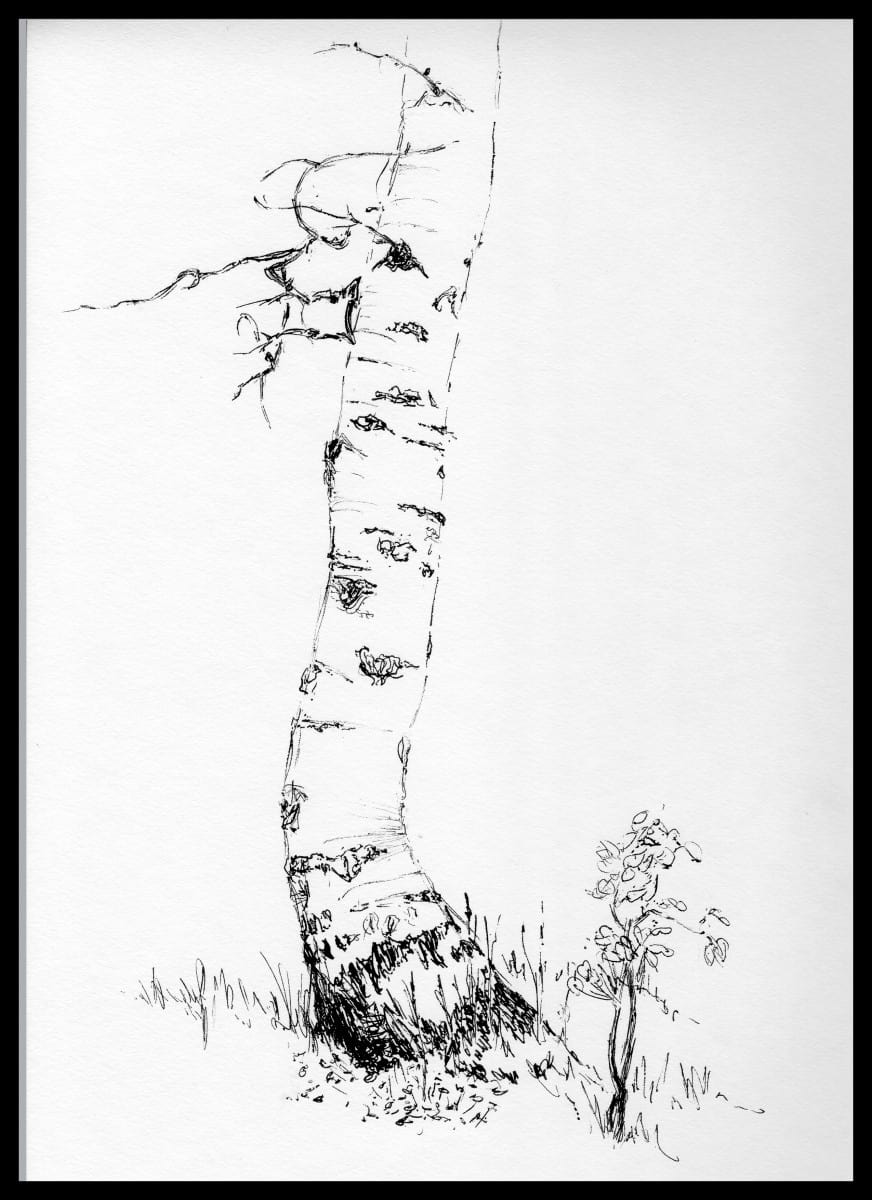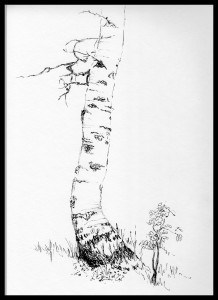Part. 3. Drawing a Quaking Aspen
I pick up my pencil. I’m so new at this, where do I begin? I decide to practice small sections. I choose a single leaf, which is nearly heart-shaped, with serrated edges, a pointed tip, and a long leafstalk that allows it to flutter, or quake in the breeze. Next I draw a lower branch with its crooks and turns; I pay particular attention to how it attaches to the tree. Around the joint the angle is abrupt with circular markings around the branch that gradually transition into the curving wrinkles around the trunk. Lovely. I also draw a couple of knots with attention to the top side which is marked by black bark in a downward curve, like an upside down smile. I hold my study sketches at arm’s length. It’s a good start.
The next day when Don and the children walk down the creek to see the beaver lodge, I begin a more finished drawing. How much of the tree will I sketch? Because I’m so close, the whole thing won’t fit on the paper. I choose to emphasize one particular trunk that shows bold markings and interesting lower branches. With pencil I lightly sketch the outline of the trunk to establish the position on paper. The vertical line of the trunk is not a continuous curve, but angled sections that extend upward. When I have the major elements in place–the angled base, the black markings, the direction of twigs and branches–and am satisfied with the overall effect, I switch to using pen. I draw the outside edges of the trunk, keeping the ink line sketchy and broken in places. Then I add the black surface marks and twisted branches. I draw a few curved growth lines very lightly to emphasize the roundness of the trunk. To finish I sketch grasses at the base, and include the baby aspen that is no doubt sprouting from the main root mass of the tree.
Love at First Sketch
As I focus on this one tree I gradually see it with increased clarity: the pose, the careful detail, the precise coloring. I appreciate its worth and its function in this remarkable creation. Did I say I love aspen? Those spreading roots help stabilize soil, especially beneficial to this watery area. The trees provide lush habitat for birds, tiny insects, microorganisms, and small animals. Tender leaves are food for the browsing deer who walk through our camp at dawn. Trees clean the air and release the oxygen that all of us need to breathe. Their presence prevents ground water from evaporating too quickly. Aspen are a rich contributor to abundant life here. Not just a resource for human gain, they help stabilize life systems on the earth. I like to think of these mountain support systems when I am at home down in the valley.
My drawing is complete and I sit back, satisfied with my efforts. That’s when I notice how still it is. A wonderful solitude has wrapped itself around our camp. The marmots must be taking a siesta; birds are quiet; the creek sounds are down to a low murmur. I listen to the silence. At length an itinerant breeze stirs the aspen to whispering forest secrets. It’s amazing how being in the outdoors touches the heart and soothes the spirit. These are valuable rewards for those who tarry, who listen, and who take time for another look.


